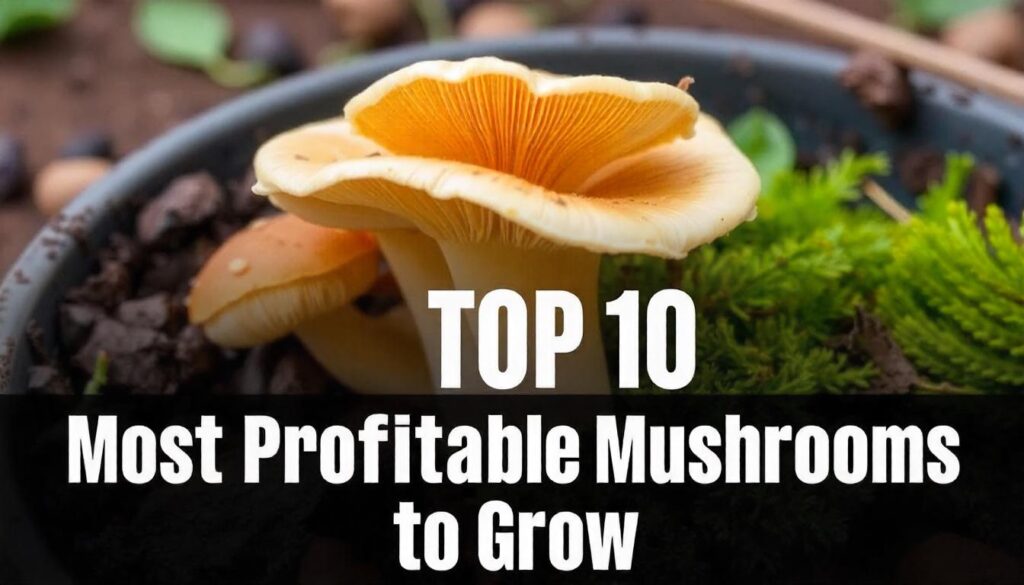

Mushroom cultivation has rapidly gained popularity among farmers and gardeners, not just for its sustainability but also for its profitability. If you’re considering mushroom cultivation or mushroom business, knowing which mushroom varieties are most profitable can set you on the path to success. Here’s a look at the top 10 mushroom varieties that are not only in high demand but also yield impressive profits.
Before jumping into a list of the most profitable mushroom varieties to grow, there are several factors to consider to make sure that you make informed decisions and set yourself up for success. Check profitability from Mushroom cultivation.
I am considering market demand, growing costs, and ROI (Return on investment) as the major factors.
Oyster mushrooms are a favorite among gourmet chefs and home cooks alike. Their delicate, slightly sweet flavor, coupled with a tender texture, makes them a versatile ingredient in a variety of dishes. These mushrooms are relatively easy to grow and can be cultivated on a range of substrates, from straw to coffee grounds. With a short growing cycle and high yield, oyster mushrooms offer a quick return on investment.
Shiitake mushrooms are revered for their rich, umami flavor and medicinal properties. Traditionally grown on logs (hard), they can also be cultivated on sawdust blocks for faster production. The demand for shiitake mushrooms extends beyond culinary uses, with a growing market in the health and wellness industry, making them a profitable choice.
Lion’s Mane mushrooms are gaining attention not just for their unique, shaggy appearance but also for their potential cognitive benefits. This mushroom is often sought after for its potential to support brain health, making it a hot commodity in both the culinary and supplement markets. Although slightly more challenging to cultivate, the premium price Lion’s Mane commands makes it worth the effort.
Known for their long, thin stems and small caps, Enoki mushrooms are a staple in Asian cuisine, particularly in soups and salads. They are typically grown in cool, dark environments, which can be easily replicated indoors. Enoki mushrooms have a long shelf life compared to other varieties, allowing growers more flexibility in distribution and sales.
Morels are among the most prized wild mushrooms, celebrated for their earthy flavor and sponge-like texture. Although challenging to cultivate, morels fetch a high price in the market, especially when sold fresh. Their scarcity and short growing season contribute to their value, making them a highly profitable variety for those who can successfully grow them.
Maitake, also known as Hen of the Woods, is popular in both culinary and medicinal circles. This mushroom is believed to boost the immune system and has a robust, peppery flavor that enhances a wide range of dishes. Maitake mushrooms grow in large clusters, offering a substantial yield per growth cycle, which can significantly boost profitability.
Reishi mushrooms are not typically grown for culinary purposes but are highly valued in traditional medicine, particularly in Asia. Known as the “Mushroom of Immortality,” Reishi is used to support the immune system, reduce stress, and promote longevity. Although they require longer growing periods and specific conditions, the health benefits they offer allow growers to command high prices in the supplement market.
Portobello mushrooms are essentially mature cremini mushrooms, known for their large, meaty caps. They are a popular meat substitute in vegetarian and vegan dishes due to their rich, savory flavor and firm texture. The steady demand for Portobello mushrooms in both the fresh market and processed food industry makes them a reliable and profitable choice for growers.
Chanterelles are another wild variety that commands a premium price, especially in gourmet restaurants. With their delicate, fruity flavor and vibrant yellow color, chanterelles are a favorite among chefs. While they are notoriously difficult to cultivate, foraging and supplying these mushrooms can be highly profitable, especially in regions where they are abundant.
Also known as the “horn of plenty,” Black Trumpet mushrooms are cherished for their smoky, rich flavor. They are often used in high-end cuisine and are a favorite among chefs who specialize in fine dining. Like chanterelles, Black Trumpet mushrooms are challenging to cultivate, but their high market value makes them a lucrative option for experienced foragers or specialty growers.